Pass Your Amazon AWS Certified Data Analytics - Specialty Exam Easy!
Amazon AWS Certified Data Analytics - Specialty Exam Questions & Answers, Accurate & Verified By IT Experts
Instant Download, Free Fast Updates, 99.6% Pass Rate
Amazon AWS Certified Data Analytics - Specialty Practice Test Questions in VCE Format
| File | Votes | Size | Date |
|---|---|---|---|
File Amazon.real-exams.AWS Certified Data Analytics - Specialty.v2024-01-11.by.dylan.96q.vce |
Votes 1 |
Size 285.1 KB |
Date Jan 11, 2024 |
File Amazon.train4sure.AWS Certified Data Analytics - Specialty.v2022-02-14.by.elizabeth.87q.vce |
Votes 1 |
Size 323.89 KB |
Date Feb 14, 2022 |
File Amazon.questionspaper.AWS Certified Data Analytics - Specialty.v2022-01-03.by.lili.76q.vce |
Votes 1 |
Size 218.71 KB |
Date Jan 03, 2022 |
File Amazon.certkey.AWS Certified Data Analytics - Specialty.v2021-10-05.by.harper.68q.vce |
Votes 1 |
Size 193.64 KB |
Date Oct 05, 2021 |
File Amazon.examdumps.AWS Certified Data Analytics - Specialty.v2021-04-29.by.ryan.57q.vce |
Votes 1 |
Size 172.26 KB |
Date Apr 28, 2021 |
File Amazon.prep4sure.AWS Certified Data Analytics - Specialty.v2020-08-12.by.willow.28q.vce |
Votes 3 |
Size 79.16 KB |
Date Aug 12, 2020 |
File Amazon.selftestengine.AWS Certified Data Analytics - Specialty.v2020-06-19.by.annie.26q.vce |
Votes 3 |
Size 79.39 KB |
Date Jun 19, 2020 |
Amazon AWS Certified Data Analytics - Specialty Practice Test Questions, Exam Dumps
Amazon AWS Certified Data Analytics - Specialty (AWS Certified Data Analytics - Specialty (DAS-C01)) exam dumps vce, practice test questions, study guide & video training course to study and pass quickly and easily. Amazon AWS Certified Data Analytics - Specialty AWS Certified Data Analytics - Specialty (DAS-C01) exam dumps & practice test questions and answers. You need avanset vce exam simulator in order to study the Amazon AWS Certified Data Analytics - Specialty certification exam dumps & Amazon AWS Certified Data Analytics - Specialty practice test questions in vce format.
Architecting for Insight - The Foundation of the AWS Certified Data Analytics - Specialty
Embarking on the journey to master AWS data analytics is a significant step for any technology professional. While the AWS Certified Data Analytics - Specialty exam has been retired, the knowledge it represents remains incredibly valuable and is a benchmark for excellence in the field. The principles and services covered are fundamental to building robust, scalable, and cost-effective data solutions in the cloud. This series will serve as an in-depth guide to these core concepts, structured to build your expertise from the ground up, just as one would when preparing for a rigorous certification. Understanding these domains is essential for designing architectures that transform raw data into actionable business intelligence.
This first part focuses on the foundational layer of any data solution which includes high-level architectural patterns and the critical services responsible for data collection. A well-designed architecture is the blueprint for success. It ensures that as data volume and complexity grow, the system can adapt without requiring a complete overhaul. We will explore the Modern Data Architecture framework, a pivotal concept that underpins many successful cloud-based analytics platforms. Mastering these initial stages of the data lifecycle is a prerequisite for the more advanced topics of processing, analysis, and security that will be covered in subsequent parts of this series.
Understanding Modern Data Architecture Patterns
At the heart of analytics on AWS is the concept of a Modern Data Architecture. This is not a rigid set of rules but rather a flexible framework that advocates for a centralized data lake, typically built on Amazon S3. This data lake acts as the single source of truth, storing vast amounts of structured, semi-structured, and unstructured data in its native format. Surrounding this central repository are a series of purpose-built data services. This design acknowledges that a one-size-fits-all approach to data storage and processing is inefficient. Instead, it promotes using the right tool for the right job.
For example, a relational database is ideal for transactional workloads, a data warehouse is built for complex analytical queries, and a search service is perfect for log analytics. The Modern Data Architecture ensures seamless data movement between the central data lake and these purpose-built stores. This allows organizations to leverage the strengths of each service without creating isolated data silos. This architectural pattern provides the scalability, agility, and cost-effectiveness needed to handle today's demanding data challenges, a key area of focus for anyone seeking to prove their skills at the level of the AWS Certified Data Analytics - Specialty.
The AWS Well-Architected Framework, specifically its Data Analytics Lens, provides crucial guidance for implementing these patterns. It outlines design principles and best practices across pillars like operational excellence, security, reliability, performance efficiency, and cost optimization. The framework details common scenarios, including batch data processing, real-time streaming ingestion, operational analytics, and interactive data visualization. Familiarity with these patterns is critical because exam-level questions often require you to analyze a business problem and select the most appropriate and well-architected solution from several options, testing your ability to make sound architectural trade-offs.
Mastering Data Collection: The Kinesis Family
Effective data collection is the first step in the analytics lifecycle. For real-time data ingestion, the Amazon Kinesis family of services is paramount. It is essential to understand the distinct role of each component. Amazon Kinesis Data Streams is designed for ingesting and storing massive streams of data records in real time. Data is organized into shards, which are the base throughput units of a stream. You must grasp how the number of shards impacts the stream's capacity for reads and writes and how to scale a stream by managing shards. Producers write data to the stream, while consumers read and process it.
Amazon Kinesis Data Firehose offers a simplified path for loading streaming data into specific destinations. Unlike Data Streams, you do not need to manage shards or write consumer applications. Firehose can automatically capture, transform, and deliver data to destinations like Amazon S3, Amazon Redshift, Amazon OpenSearch Service, and other supported endpoints. It provides capabilities for in-flight data transformation using AWS Lambda and can convert data formats, for example from JSON to Parquet, before storing it. This service is ideal for scenarios where the primary goal is reliable data delivery to a data lake or warehouse with minimal operational overhead.
The third key service is Amazon Kinesis Data Analytics, which enables you to process and analyze streaming data using standard SQL or Apache Flink. It can read data directly from Kinesis Data Streams or Kinesis Data Firehose, allowing you to perform time-series analysis, build real-time dashboards, and create alerts. You need to understand concepts like tumbling windows, sliding windows, and how to define schemas on streaming data. A deep understanding of the entire Kinesis suite, including their integrations, quotas, and scaling mechanisms, is a significant part of the knowledge required for the AWS Certified Data Analytics - Specialty.
Alternative Ingestion Methods and Services
While Kinesis is a cornerstone of real-time ingestion, a comprehensive analytics strategy requires knowledge of other collection services. Amazon Managed Streaming for Apache Kafka, or Amazon MSK, provides a fully managed service for running Apache Kafka clusters. This is crucial for organizations that are already using Kafka or prefer its ecosystem. You should understand the benefits of a managed service, such as automated provisioning, patching, and scaling, as well as how to configure and secure an MSK cluster. Knowing when to choose MSK over Kinesis, based on factors like existing skill sets, ecosystem compatibility, and specific feature requirements, is a common decision point in architecture design.
For message-based integration and decoupling of microservices, Amazon Simple Queue Service (SQS) is often used. While not a dedicated streaming service, SQS queues can serve as a buffer for data before it is processed and ingested into a data lake. Similarly, Amazon DynamoDB Streams captures a time-ordered sequence of item-level modifications in any DynamoDB table. This stream can be processed by AWS Lambda or other applications to trigger downstream actions, such as replicating data into an analytical store. These services demonstrate the variety of event sources that can feed into an analytics pipeline.
For large-scale batch data migration, AWS offers services tailored for moving terabytes or petabytes of data. The AWS Snow Family, including devices like Snowball Edge, allows for the physical transfer of data when network constraints make online transfer impractical. For ongoing database replication and migration, AWS Database Migration Service (DMS) is a key tool. It helps migrate databases to AWS reliably and securely and can be used for continuous data replication from a wide range of source databases to target data stores, including those used for analytics like Amazon S3 and Redshift.
Core Concepts of Data Formats and Compression
An often-overlooked but critical aspect of data collection and storage is the choice of data format and compression. The format in which you store data on your data lake has profound implications for both storage costs and query performance. Row-based formats like JSON and CSV are easy to read and write but are inefficient for analytical queries that typically only access a subset of columns. Columnar formats like Apache Parquet and Apache ORC store data by column rather than by row. This allows query engines like Amazon Athena and Amazon Redshift Spectrum to read only the specific columns needed for a query, dramatically reducing the amount of data scanned.
This columnar access significantly improves query performance and reduces costs, as many AWS services charge based on the amount of data scanned. You must understand the benefits of these formats and how to convert data into them, often using services like AWS Glue or Kinesis Data Firehose during the ingestion process. The ability to choose the right format for a given use case is a fundamental skill for a data analytics professional. For the AWS Certified Data Analytics - Specialty level of expertise, you would be expected to know which formats are best suited for different query patterns and services.
Compression further optimizes storage costs and performance by reducing the physical size of the data. Different compression algorithms, such as Snappy, Gzip, and Bzip2, offer different trade-offs between compression ratio and the computational overhead required to compress and decompress the data. An important concept to master is that of splittable compression algorithms. A splittable algorithm, like Snappy or Bzip2 when used with Parquet, allows a processing engine like Apache Spark to read and process different parts of a single large file in parallel. Non-splittable formats, like Gzip, can create performance bottlenecks because a single worker must process the entire file.
Ensuring Data Order and Delivery Semantics
When dealing with streaming data, understanding the ordering and delivery guarantees of a service is crucial for maintaining data integrity. Data ordering ensures that records are processed in the sequence they were generated. In Amazon Kinesis Data Streams, records with the same partition key are guaranteed to be routed to the same shard and processed in order. This is essential for applications like clickstream analysis or financial transaction processing where the sequence of events matters. You need to know how to design your partition key strategy to balance throughput and maintain the required order.
Delivery semantics define the guarantees a system provides about message delivery. An "at-least-once" delivery semantic, common in many distributed systems, ensures that every message is delivered, but it might be delivered more than once. This requires downstream applications to be idempotent, meaning they can safely process the same message multiple times without causing errors or data duplication. An "exactly-once" semantic is more complex to achieve but guarantees that each message is processed precisely one time. Understanding these concepts and knowing which semantics are offered by services like Kinesis, SQS, and MSK is vital for building reliable data pipelines.
These foundational elements, from high-level architecture to the specific configurations of ingestion services, form the bedrock of any successful data analytics platform on AWS. A thorough grasp of these topics is the first major step toward achieving the level of proficiency validated by the AWS Certified Data Analytics - Specialty. The next part in this series will build upon this foundation, diving deep into the domains of storage and data management, where we will explore how to effectively store, catalog, and govern the data you have collected.
Introduction to Data Storage and Management
After successfully collecting data, the next critical phase in the analytics lifecycle is its storage and management. This is not merely about finding a place to dump data; it involves a strategic approach to organizing, securing, and cataloging data to make it discoverable, accessible, and cost-effective to maintain. In the context of the AWS Certified Data Analytics - Specialty, a deep understanding of storage services and data governance principles is non-negotiable. This part of our series will delve into the core services and strategies that form the backbone of a well-managed data repository on AWS.
We will begin with an exhaustive look at Amazon S3, the de facto data lake storage service in the cloud. We will explore its storage classes, security features, and performance optimization techniques. Following that, we will transition to the crucial topic of data governance, focusing on AWS Lake Formation and the AWS Glue Data Catalog. These services provide the tools needed to manage access control at a granular level and create a searchable, centralized metadata repository. Finally, we will revisit the important concepts of data partitioning and distribution, which are fundamental to achieving high performance and cost efficiency in large-scale analytical systems.
Amazon S3: The Cornerstone of the Data Lake
Amazon S3 is the foundational service for building a data lake on AWS due to its virtually unlimited scalability, high durability, and cost-effectiveness. A data architect must have an expert-level understanding of S3. This starts with its storage classes. S3 Standard is for frequently accessed data, while S3 Intelligent-Tiering automatically moves data to the most cost-effective access tier based on usage patterns. S3 Standard-Infrequent Access and S3 One Zone-Infrequent Access are for less-frequently accessed data, and the S3 Glacier family (Instant Retrieval, Flexible Retrieval, and Deep Archive) is designed for long-term archival at the lowest cost.
Understanding how to use S3 Lifecycle policies to automatically transition objects between these storage classes is essential for cost optimization. For example, you might create a policy to move log files from S3 Standard to S3 Glacier Deep Archive after 90 days. You must also know the retrieval times and costs associated with each class, as this impacts data availability for analysis. For instance, data in S3 Glacier Deep Archive can take hours to restore, making it unsuitable for interactive querying, and services like Amazon Athena cannot directly query data stored in the Glacier storage classes.
Security in Amazon S3 is another vast and critical topic. You must be proficient in using S3 Block Public Access, bucket policies, and Access Control Lists (ACLs) to control access at the bucket and object level. Encryption is also paramount. You need to understand the differences between server-side encryption with S3-managed keys (SSE-S3), KMS-managed keys (SSE-KMS), and customer-provided keys (SSE-C), as well as client-side encryption. For performance, knowledge of S3 request limits and how to optimize for them using prefixes and, in some cases, request parallelization, is vital for high-throughput applications.
Building a Governed Data Lake with AWS Lake Formation
As data lakes grow, managing access permissions across numerous services, databases, and tables can become incredibly complex. AWS Lake Formation is a managed service that simplifies the process of building, securing, and managing a data lake. It acts as a centralized access control layer on top of your data stored in Amazon S3 and cataloged in the AWS Glue Data Catalog. Lake Formation allows you to define and enforce fine-grained permissions for users and roles across a suite of AWS analytics services, including Amazon Athena, Amazon Redshift Spectrum, and AWS Glue.
Instead of managing separate IAM policies, S3 bucket policies, and database permissions, you can define permissions in one place. Lake Formation provides table-level, column-level, and even row-level security. For example, you can grant a data analyst access to only specific columns of a customer table, masking sensitive information like personal identifiers. A key feature to understand is its use of tag-based access control, which allows you to manage permissions at scale by assigning tags to data resources and then defining policies based on those tags.
Another powerful capability of Lake Formation is its support for cross-account data sharing. This enables you to share specific databases or tables from your central data catalog with other AWS accounts securely. This is a common pattern in large organizations where different business units or teams need access to subsets of the central data. Understanding how to set up these cross-account permissions and how Lake Formation integrates with IAM and underlying services is a sophisticated topic that aligns with the expertise expected for the AWS Certified Data Analytics - Specialty.
The AWS Glue Data Catalog: Your Metadata Repository
The AWS Glue Data Catalog is a fully managed, Apache Hive Metastore-compatible metadata repository. It serves as a central catalog for all your data assets, regardless of where they are located. The Data Catalog stores metadata such as table definitions, schemas, partition information, and data locations. This abstraction allows you to decouple your data storage from your compute and query engines. Services like Amazon Athena, Amazon EMR, and Amazon Redshift Spectrum use the Glue Data Catalog to discover and query your data.
A key component of populating the catalog is the AWS Glue crawler. A crawler can connect to a data store (like an S3 bucket or a relational database), automatically infer the schema of the data, and create or update table definitions in the Data Catalog. You need to understand how to configure crawlers, including how they handle schema changes and evolving data structures. For complex or non-standard data, you might need to create custom classifiers to guide the crawler in correctly identifying the data format and schema.
Beyond crawlers, you can also manage the Data Catalog programmatically using the AWS SDKs or by defining tables manually. You should be familiar with the structure of the catalog, which includes databases, tables, partitions, and table properties. The catalog also supports schema versioning, which allows you to track changes to a table's schema over time. A well-managed and accurate data catalog is the foundation for data discovery and self-service analytics, making it a critical component of any data architecture on AWS.
Mastering Data Partitioning Strategies
Data partitioning is one of the most important techniques for optimizing performance and reducing costs in a data lake. Partitioning involves organizing data in your S3 bucket into a hierarchical directory structure based on the values of specific columns. For example, time-series data is commonly partitioned by year, month, and day. This creates a directory structure like s3://my-bucket/logs/year=2025/month=09/day=10/. When a query engine like Amazon Athena receives a query that filters on these partition columns (e.g., WHERE year = 2025 AND month = 09), it can use the partition information from the Glue Data Catalog to prune the search space.
This partition pruning means the query engine only scans the data in the relevant directories, completely ignoring the data in other partitions. This can lead to massive improvements in query performance and significant cost savings, as you are scanning much less data. Choosing the right partitioning strategy is crucial. You need to select columns that are frequently used in query filters. However, over-partitioning (creating too many small partitions) can also lead to performance degradation. Finding the right balance based on your data's cardinality and query patterns is a key skill.
You must also understand how to work with partitioned data in services like AWS Glue. When an AWS Glue job processes partitioned data, it can leverage the partition information to perform processing in parallel, improving efficiency. Similarly, when a Glue crawler runs on a partitioned dataset, it identifies the partition structure and populates the metadata in the Data Catalog accordingly, making it available for query engines. A solid grasp of partitioning is absolutely essential for anyone aspiring to pass the AWS Certified Data Analytics - Specialty exam.
Data Distribution in a Data Warehouse Context
While partitioning is key for data lakes, a related concept in the data warehousing world is data distribution. In a massively parallel processing (MPP) data warehouse like Amazon Redshift, data is distributed across multiple compute nodes. The way this data is distributed, known as the distribution style, has a major impact on query performance. Amazon Redshift supports several distribution styles. The EVEN style distributes data evenly across all slices in a round-robin fashion. This is the default but is often not the most optimal choice.
The KEY distribution style distributes data based on the values in a specific column (the DISTKEY). All rows with the same value in the distribution key column are placed on the same compute node slice. This is highly effective when you frequently join large tables on that key, as the join operation can be performed locally on each node (a co-located join) without needing to shuffle data across the network. The ALL distribution style places a full copy of the table on every compute node. This is suitable for smaller, slowly changing dimension tables that are frequently joined with large fact tables.
Choosing the correct distribution style and sort keys (which determine the physical order of data on disk) is fundamental to Amazon Redshift performance tuning. An incorrect choice can lead to significant data skew, where some nodes have much more data to process than others, and excessive data movement across the network during query execution. Understanding these concepts and how to analyze query plans to identify and resolve distribution-related performance issues is a hallmark of an expert data architect.
Introduction to Data Processing
With data effectively collected and stored, the next logical step is processing. This is the engine room of the analytics pipeline, where raw data is transformed, cleaned, enriched, and aggregated to prepare it for analysis. For the AWS Certified Data Analytics - Specialty, a comprehensive understanding of the various data processing services and patterns is critical. This domain covers a wide spectrum of technologies, from serverless ETL (Extract, Transform, Load) to large-scale big data frameworks and real-time stream processing. This part of our series will explore the core processing engines available on AWS.
We will start with AWS Glue, the primary service for serverless ETL and data integration. Then we will move to Amazon EMR, which provides a managed environment for running popular big data frameworks like Apache Spark and Apache Hadoop. We will also cover real-time processing capabilities using Amazon Kinesis Data Analytics for Apache Flink. Throughout this section, we will emphasize the importance of choosing the right tool for the job, understanding the key integrations between services, and leveraging serverless options to reduce operational overhead and optimize costs. These skills are essential for building efficient and scalable data processing solutions.
Comprehensive Guide to AWS Glue for ETL
AWS Glue is a fully managed ETL service that makes it easy to prepare and load data for analytics. Its serverless nature means you do not have to provision or manage any infrastructure; AWS Glue handles that automatically. At the core of the service are Glue jobs, which run scripts written in Python or Scala. These jobs leverage an Apache Spark or Python shell environment to perform data transformations. A key concept in Glue is the DynamicFrame, which is a distributed data structure similar to a Spark DataFrame but with added capabilities for handling messy or evolving schemas, a common challenge in data lakes.
You should be proficient in creating and configuring Glue jobs. This includes understanding job bookmarks, which allow Glue to process only new data since the last run, preventing the reprocessing of old data in recurring jobs. You also need to know how to use Glue workflows to orchestrate complex ETL pipelines that involve multiple jobs, crawlers, and triggers. Glue Studio provides a visual, drag-and-drop interface for building ETL jobs without writing code, making it accessible to a wider audience. For more specific, no-code data preparation tasks, AWS Glue DataBrew offers a visual interface for cleaning and normalizing data directly from your data lake or data warehouse.
Understanding the integration points of AWS Glue is vital. Glue jobs read from and write to a wide variety of data sources and targets, using the AWS Glue Data Catalog to retrieve schema and location information. They can transform data from JSON to Parquet, join datasets from different sources, and partition the output data in Amazon S3 for optimal query performance. Knowing how to tune Glue jobs for performance, manage dependencies, and monitor their execution using metrics in Amazon CloudWatch is a key part of the skill set required for the AWS Certified Data Analytics - Specialty.
Mastering Amazon EMR for Big Data Frameworks
For workloads that require more control over the execution environment or the use of a wider array of big data tools, Amazon EMR is the go-to service. EMR provides a managed framework that simplifies running big data frameworks such as Apache Spark, Apache Hadoop, Apache Hive, Presto, and others on dynamically scalable clusters of virtual servers. You have full SSH access to the nodes and can customize the software stack, making it highly flexible. You need to understand the architecture of an EMR cluster, which consists of a master node that coordinates the cluster, and core and task nodes that run the data processing tasks.
A critical aspect of using EMR is choosing the right instance types for your nodes and understanding the different purchasing options. You can use On-Demand instances for predictable workloads, Reserved Instances for long-term commitments, and Spot Instances for fault-tolerant workloads to significantly reduce costs. EMR's integration with Amazon S3 through the EMR File System (EMRFS) allows you to use S3 as a durable and scalable storage layer, decoupling your compute from your storage. This enables you to terminate clusters when they are not in use to save money, while your data remains safe in S3.
In recent years, AWS has introduced more flexible deployment options for EMR. EMR Serverless allows you to run Spark and Hive applications without having to configure, manage, and scale clusters. You simply submit your job and pay for the resources used during execution. EMR on EKS allows you to run EMR applications on Amazon Elastic Kubernetes Service, consolidating your big data and containerized applications on a single platform. Knowing the use cases, benefits, and trade-offs of each EMR deployment model (clusters, serverless, and EKS) is crucial for modern data architecture design.
Real-Time Processing with Kinesis Data Analytics
While AWS Glue and Amazon EMR are primarily used for batch processing, modern analytics often requires the ability to process data in real time as it arrives. Amazon Kinesis Data Analytics is a fully managed service for processing streaming data. It offers two primary environments: Kinesis Data Analytics for SQL and Kinesis Data Analytics for Apache Flink. The SQL version allows you to write standard SQL queries on streaming data, which is ideal for simpler transformations, aggregations, and filtering tasks. You can define windows (tumbling, sliding, or stumbling) to perform computations over specific time intervals of the stream.
For more complex stream processing logic, Kinesis Data Analytics for Apache Flink provides a powerful, open-source framework. Apache Flink is a stateful stream processing engine that offers fine-grained control over time and state, enabling advanced analytics like complex event processing, stream enrichment with external data sources, and building sophisticated, multi-stage streaming applications. You can write your Flink applications in Java or Scala and deploy them in a fully managed, serverless environment. Kinesis Data Analytics handles the underlying infrastructure, including provisioning, scaling, and fault tolerance.
A key aspect to master is how these applications manage state. Streaming applications often need to maintain state over time, such as a running count or a user session. Kinesis Data Analytics provides mechanisms for automatically checkpointing this state to durable storage, ensuring that the application can recover without data loss in the event of a failure. Understanding how to configure the source streams (like Kinesis Data Streams) and destination sinks (like S3 or another Kinesis stream), and how to monitor and troubleshoot these real-time applications, is a critical skill for streaming data architects.
Understanding Data Movement and Service Integrations
A modern data architecture is not a monolithic system but a collection of integrated, purpose-built services. Therefore, understanding the patterns of data movement between these services is as important as knowing the services themselves. You will frequently be tested on your ability to select the correct integration for a given requirement. For example, a common pattern is to use Kinesis Data Firehose to ingest streaming data and deliver it directly to an S3 bucket in a partitioned, columnar format. This data can then be cataloged by an AWS Glue crawler and immediately become available for processing by a Glue ETL job or for querying by Amazon Athena.
Another frequent pattern involves streaming analytics. An application running on Kinesis Data Analytics might read from a raw Kinesis Data Stream, perform real-time anomaly detection, and then write the identified anomalies to a separate stream. A downstream application, perhaps an AWS Lambda function, could then consume from this "anomalies" stream to trigger alerts or notifications. You must know the supported sources and sinks for each service. For example, what are the supported destinations for Kinesis Data Firehose? What data sources can an AWS Glue job connect to?
These integrations often have specific configurations and limitations that you must be aware of. When loading data into Amazon Redshift, for instance, you can use the COPY command to load directly from S3, or you can use Kinesis Data Firehose. Each method has its own performance characteristics and best practices. Similarly, when using AWS Database Migration Service (DMS), you need to know which source and target endpoints are supported for ongoing replication. A deep knowledge of these integration points is what separates a novice from an expert data architect and is a consistent theme in the AWS Certified Data Analytics - Specialty curriculum.
Introduction to Analysis and Visualization
The ultimate goal of any data platform is to derive actionable insights that drive business value. After collecting, storing, and processing data, the final stages of the analytics lifecycle are analysis and visualization. This is where data is put into the hands of analysts, data scientists, and business users to explore, query, and understand. The AWS Certified Data Analytics - Specialty places a strong emphasis on your ability to use the right analytical tools for different scenarios, from interactive SQL queries on a data lake to building enterprise-scale data warehouses and creating compelling business intelligence dashboards.
This part of the series will cover the suite of AWS services designed for analysis and visualization. We will begin with Amazon Athena, the serverless query engine for your data lake. We will then explore Amazon Redshift, the fully managed petabyte-scale data warehouse. The discussion will also cover Amazon OpenSearch Service for operational analytics and log analysis. Finally, we will dive into Amazon QuickSight, the cloud-native business intelligence service, and touch upon the machine learning capabilities that are increasingly being integrated directly into these analytics services to further democratize data science.
Interactive Ad-Hoc Querying with Amazon Athena
Amazon Athena is a serverless, interactive query service that makes it easy to analyze data directly in Amazon S3 using standard SQL. Because it is serverless, there is no infrastructure to manage, and you pay only for the queries you run, based on the amount of data scanned. This makes it an incredibly powerful and cost-effective tool for ad-hoc data exploration and analysis on your data lake. Athena uses the AWS Glue Data Catalog to find the location and schema of your data, so any data that is cataloged can be queried instantly.
To effectively use Athena, you must understand performance optimization techniques. As mentioned in previous parts, partitioning your data in S3 is the single most important factor. By partitioning data and including partition keys in your query's WHERE clause, you can drastically reduce the amount of data scanned. Using columnar file formats like Apache Parquet or ORC also significantly improves performance and reduces costs compared to row-based formats like JSON. Compressing your data further reduces the amount of data that needs to be read from S3.
Athena Workgroups are another key feature to master. Workgroups allow you to isolate queries for different teams or applications, manage query concurrency, and enforce cost controls by setting limits on the amount of data that can be scanned per query or per workgroup. You can also use workgroups to specify the S3 location for query results. Athena also supports federated queries, which enable you to run SQL queries across data stored in relational, non-relational, object, and custom data sources, not just S3, further extending its utility as a unified query interface.
Building Enterprise Data Warehouses with Amazon Redshift
For more structured, high-performance analytical querying and business intelligence workloads, Amazon Redshift is the premier data warehousing service on AWS. It is a fully managed, petabyte-scale data warehouse that uses a massively parallel processing (MPP) architecture to execute complex queries on large datasets with high speed. You need to understand its architecture, which consists of a leader node that manages client connections and query planning, and multiple compute nodes that store data and execute the query steps in parallel.
A crucial feature of Redshift is Redshift Spectrum. This allows you to run SQL queries directly against exabytes of data stored in your Amazon S3 data lake, without needing to load it into the Redshift cluster first. This enables you to join data that is stored locally on the Redshift compute nodes with data in your S3 data lake in a single query. Understanding when to store data within the Redshift cluster versus when to keep it in S3 and query it with Spectrum is a key architectural decision. It often depends on query frequency, performance requirements, and data update patterns.
Modern Amazon Redshift also offers features designed for elasticity and ease of use. Concurrency Scaling allows Redshift to automatically add and remove transient cluster capacity to handle bursts of query activity, ensuring consistently fast performance for many concurrent users. The recently introduced Amazon Redshift Serverless option further simplifies management by automatically provisioning and scaling the data warehouse capacity, allowing you to focus on your analytics rather than on infrastructure management. Expertise in Redshift, including its performance tuning, workload management (WLM), and scaling capabilities, is a core requirement for the AWS Certified Data Analytics - Specialty.
Operational and Log Analytics with Amazon OpenSearch Service
Not all analytics is historical. Operational analytics involves monitoring, analyzing, and acting on data from systems and applications in near real-time. Amazon OpenSearch Service (the successor to Amazon Elasticsearch Service) is a managed service that makes it easy to deploy, operate, and scale OpenSearch clusters. It is widely used for log analytics, application monitoring, and full-text search. Data, often in the form of logs or events, is sent to an OpenSearch cluster, where it is indexed and made available for search and analysis, typically within seconds.
A common architecture involves streaming logs and metrics from various sources, such as web servers or applications, using an agent like Fluentd or Logstash. This data is often sent to Kinesis Data Firehose, which can buffer, transform, and reliably deliver it to the OpenSearch cluster. Once the data is in OpenSearch, users can perform interactive searches, create aggregations, and build near real-time dashboards using OpenSearch Dashboards (the successor to Kibana). This provides immediate insights into the health and performance of applications and infrastructure.
For the AWS Certified Data Analytics - Specialty, you should understand the basic concepts of an OpenSearch cluster, such as indices, shards, and replicas. You need to know how to right-size a domain based on data volume and query load, and how to configure its security, including network access and fine-grained access control for users. Understanding the role of OpenSearch in a broader analytics architecture, particularly for use cases that require fast text search and near real-time analysis, is important.
Creating Visualizations and Dashboards with Amazon QuickSight
The final step in making data accessible is visualization. Amazon QuickSight is a scalable, serverless, embeddable, machine learning-powered business intelligence (BI) service built for the cloud. It allows you to create and publish interactive dashboards that can be accessed by users across your organization. QuickSight can connect to a wide variety of data sources, including AWS services like Redshift, Athena, S3, and RDS, as well as third-party data sources.
A key component of QuickSight is its in-memory calculation engine called SPICE (Super-fast, Parallel, In-memory Calculation Engine). SPICE automatically replicates data and stores it in-memory to provide rapid query responses for your visualizations. You need to understand when to use SPICE versus a direct query to the underlying data source. SPICE is ideal for accelerating performance and reducing the load on your source databases, while direct query is suitable for data that needs to be absolutely real-time.
QuickSight also offers advanced features that you should be familiar with. It has built-in machine learning capabilities, such as ML Insights, which can automatically perform anomaly detection, forecasting, and identify key drivers in your data without requiring any data science expertise. QuickSight also supports embedded analytics, allowing you to integrate its dashboards and visualizations directly into your own applications. Understanding QuickSight's user and security models, including row-level security and integration with AWS Lake Formation for permissions, is essential for deploying it in an enterprise environment.
Introduction to Cross-Cutting Concerns
Building a high-performing data analytics platform is not just about choosing the right services for collection, storage, processing, and analysis. It is equally important to address the cross-cutting concerns that ensure the platform is secure, reliable, efficient, and cost-effective. The AWS Certified Data Analytics - Specialty exam thoroughly tests your knowledge of these operational and governance aspects. This final part of our series will focus on the crucial domains of security, governance, monitoring, troubleshooting, and optimization.
Mastering these topics is what transforms a functional architecture into an enterprise-grade, production-ready solution. We will explore a holistic approach to data security, covering everything from network controls to encryption and access management. We will delve into monitoring and troubleshooting techniques to maintain system health and performance. Finally, we will cover the critical strategies for performance tuning and cost optimization, ensuring that your data platform delivers maximum value without incurring unnecessary expense. These principles tie together everything we have discussed and are fundamental to being a successful data analytics professional on AWS.
A Holistic Approach to Data Security and Compliance
Security is the highest priority at AWS, and it should be for any data architect. A multi-layered security strategy is essential for protecting sensitive data. This begins with network security. Using Amazon Virtual Private Cloud (VPC) to launch your resources in a logically isolated network is a fundamental practice. You must understand how to use security groups, network access control lists (NACLs), and VPC endpoints to control inbound and outbound traffic to your analytics services like Amazon Redshift and Amazon EMR clusters. VPC endpoints, in particular, are crucial for allowing private communication between your VPC and other AWS services without traversing the public internet.
Encryption is another non-negotiable layer of security. You must protect data both at rest and in transit. For data in transit, this means enforcing TLS/SSL connections to your service endpoints. For data at rest, services like S3, Redshift, and Glue offer server-side encryption options. You need to be an expert in using AWS Key Management Service (KMS) to create and manage encryption keys, and understand the difference between AWS-managed keys and customer-managed keys (CMKs), the latter of which provides more control and auditability.
Identity and access management is the third pillar. AWS Identity and Access Management (IAM) is the central service for controlling access to all AWS resources. You must be proficient in writing IAM policies that grant least-privilege access to users and services. Using IAM roles, especially for service-to-service communication (e.g., allowing an EMR cluster to access data in S3), is a critical best practice. It avoids the need to hardcode credentials and provides a secure, temporary way for services to assume permissions. Services like AWS Lake Formation, as discussed previously, build upon IAM to provide more granular, data-centric access controls within your data lake.
Monitoring and Troubleshooting Analytics Workloads
Once a data platform is in production, monitoring becomes essential for maintaining reliability and performance. Amazon CloudWatch is the central monitoring service on AWS, collecting metrics, logs, and events from nearly all analytics services. For each service, you must know the key metrics to monitor. For Kinesis Data Streams, this includes metrics like GetRecords.Latency and WriteProvisionedThroughputExceeded, which can indicate that your stream is under-provisioned and throttling requests. For an Amazon Redshift cluster, monitoring CPU utilization, disk space, and query queue length is vital for identifying performance bottlenecks.
Beyond metrics, CloudWatch Logs allows you to centralize and analyze log files from your applications and services. For example, you can configure AWS Glue jobs and EMR clusters to send their Spark driver and executor logs to CloudWatch. This allows you to query the logs to troubleshoot job failures or performance issues without needing to SSH into a cluster. You should also be proficient in setting up CloudWatch Alarms. An alarm watches a single metric over a specified period and can trigger an action, such as sending a notification via Amazon Simple Notification Service (SNS), if the metric breaches a defined threshold.
Troubleshooting requires a deep understanding of how each service works. If an Athena query is slow, you should know to check if it is leveraging partitions, if the data is in a columnar format, and if there are too many small files. If a Kinesis Data Stream is throttling, you need to know how to respond, which might involve increasing the shard count or optimizing your producers to use the PutRecords API for batching. Some services, like EMR with its Spark UI, offer additional, service-specific monitoring dashboards that provide deeper insights into job execution.
Performance Tuning and Cost Optimization Strategies
Performance and cost are often two sides of the same coin in the cloud. A well-tuned architecture is almost always a more cost-effective one. For every AWS analytics service, there are specific levers you can pull to optimize performance. For Amazon Redshift, this involves choosing appropriate distribution styles and sort keys, as well as implementing workload management (WLM) to prioritize critical queries. For Amazon EMR, performance tuning involves selecting the right instance types, configuring Spark memory settings, and using auto-scaling to match cluster capacity to the workload demands.
Cost optimization is an ongoing process that requires a detailed understanding of service pricing models. For Amazon S3, this means implementing lifecycle policies to move data to lower-cost storage tiers as it ages. For EMR, it involves leveraging Spot Instances for fault-tolerant workloads, which can provide savings of up to 90% compared to On-Demand prices. For serverless services like Athena and Glue, optimization focuses on reducing the amount of data scanned or the resources consumed. This reinforces the importance of partitioning, columnar formats, and compression.
Using tools like AWS Cost Explorer and setting up budgets and alerts can help you track your spending and identify areas for optimization. The AWS Well-Architected Framework and its Analytics Lens provide a wealth of best practices for both performance and cost. A key skill for the AWS Certified Data Analytics - Specialty is the ability to analyze a given scenario, identify inefficiencies, and recommend specific changes to improve performance or reduce cost, demonstrating a practical and business-aware approach to architecture.
Final Preparation and The Value of Certification
This five-part series has provided an in-depth tour of the core domains required to achieve a level of mastery equivalent to the AWS Certified Data Analytics - Specialty. We have covered architecture patterns, collection, storage, processing, analysis, security, and operations. While theoretical knowledge is essential, there is no substitute for hands-on experience. The best way to solidify these concepts is to build your own data pipelines in an AWS account. Set up a Kinesis stream, process it with a Glue job, store the results in a partitioned S3 bucket, catalog it, and query it with Athena.
Organizations are increasingly reliant on data to make critical decisions, and the demand for skilled professionals who can build and manage these data platforms continues to grow. Pursuing a deep understanding of these topics, using the retired certification's structure as a guide, validates your expertise in designing cost-efficient, secure, and high-performance data processing architectures on AWS. This knowledge will not only enhance your career prospects but will also empower you to help your organization unlock the full potential of its data. Good luck on your learning journey.
Go to testing centre with ease on our mind when you use Amazon AWS Certified Data Analytics - Specialty vce exam dumps, practice test questions and answers. Amazon AWS Certified Data Analytics - Specialty AWS Certified Data Analytics - Specialty (DAS-C01) certification practice test questions and answers, study guide, exam dumps and video training course in vce format to help you study with ease. Prepare with confidence and study using Amazon AWS Certified Data Analytics - Specialty exam dumps & practice test questions and answers vce from ExamCollection.
Amazon AWS Certified Data Analytics - Specialty Video Course
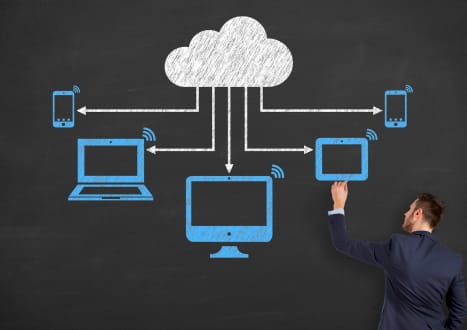
Top Amazon Certification Exams
- AWS Certified Solutions Architect - Associate SAA-C03
- AWS Certified Solutions Architect - Professional SAP-C02
- AWS Certified AI Practitioner AIF-C01
- AWS Certified Cloud Practitioner CLF-C02
- AWS Certified Machine Learning Engineer - Associate MLA-C01
- AWS Certified DevOps Engineer - Professional DOP-C02
- AWS Certified Data Engineer - Associate DEA-C01
- AWS Certified Advanced Networking - Specialty ANS-C01
- AWS Certified Developer - Associate DVA-C02
- AWS Certified Security - Specialty SCS-C02
- AWS Certified Machine Learning - Specialty
- AWS Certified CloudOps Engineer - Associate SOA-C03
- AWS Certified SysOps Administrator - Associate
- AWS-SysOps
Site Search:








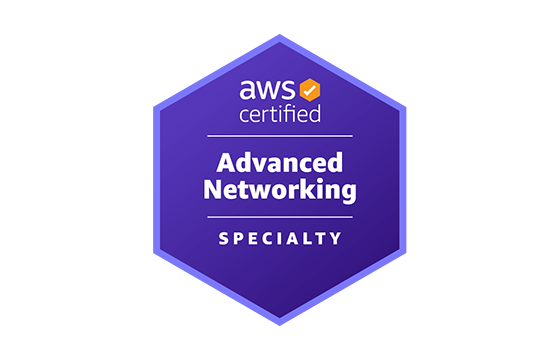



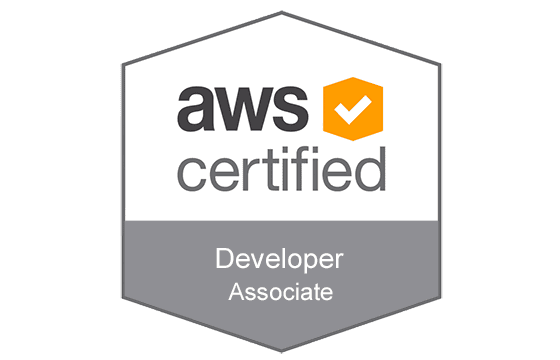
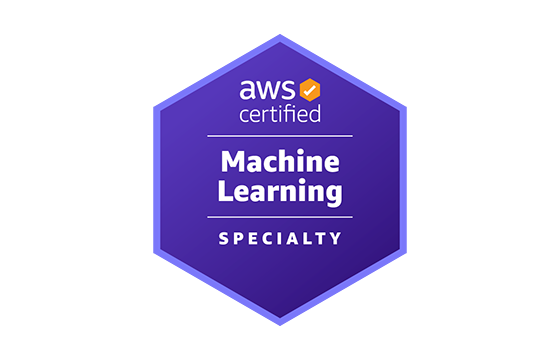

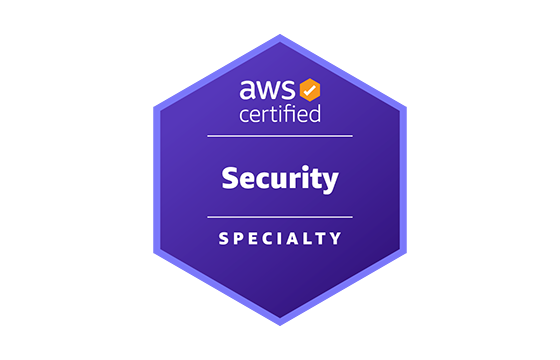
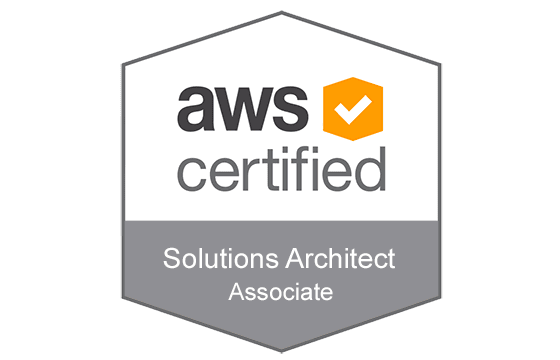
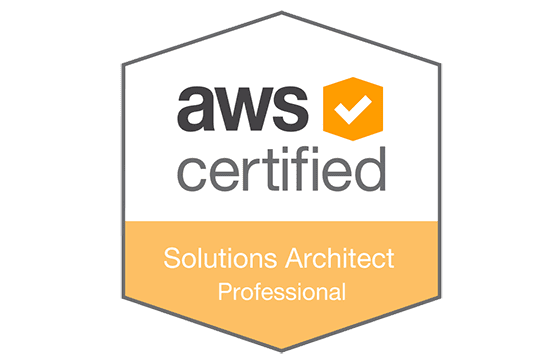
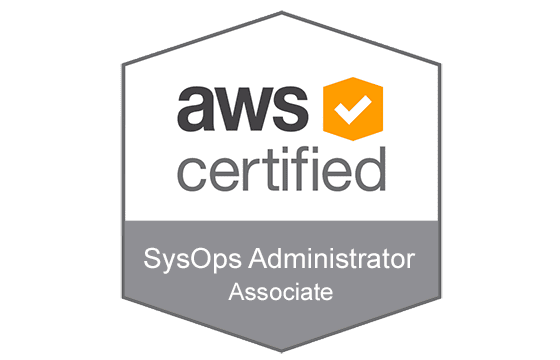
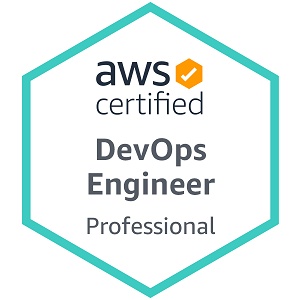



@vivian, lol, you can find the latest and most valid amazon das-c01 practice test questions here. i assure you that these Qs will make you comfortable with the real exam environment. i prepared for my assessment using them and they helped me clear it with excellent marks. try them out in your revision and you’ll not have regrets! oh, BTY, no need to pay for them. ))
hello there, sorry my silly question: are the DAS-C01 practice test questions offered by Exam-Collection valid? should I use them in my revision 4 the exam? Thx
guys! for excellent exam prep, you’ll need to dl amazon das-c01 practice tests. FYI, all sorts of questions that are likely to be featured in the actual test are available on these materials!!! with them i achieved a very high score in my exam.960 points!!!!! use them as they won’t cost you a penny!!!
@jacky3512, well, the Amazon DAS-C01 dumps offered here r rich in useful info for the exam. these resources helped me immensely 2 grasp the core concepts & gain the relevant skills. at least i hope so. IAC they were 4 sure pivotal in my gr8 performance in the test. use them w/o fear of disappointment. GL & tons of best wishes! ))))
wow! i’m really happy for acing my test and earning Amazon AWS Certified Data Analytics - Specialty certification. TBH, you’ve done an incredible job dudes from Exam-collection… you’ve designed very helpful training products for this test. IMHO, Exam-collection is the best site for everyone preparing for DAS-C01 assessment…..
hi ppl, i’m in the lookout for high-quality das-c01 dumps? r the ones from this platform worth using? waiting 4 honest opinions asap , TY!
@susan, XOXO!!! the DAS-C01 practice tests provided on this platform are wonderful!!! they not only helps u 2 measure ur skills and knowledge but also helps u to combat all the nervousness u have for the exam. moreover, they’ve same format as the actual test. use them in ur prep and they’ll make u effective enough to get through the assessment. strongly recommend!!!
hi guys….looking 4 the best materials 4 das-c01 exam …plsssssss recommend!
practice test for data analytics
Getting ready for this exam
want to pass AWS data analytics
i need this exam now